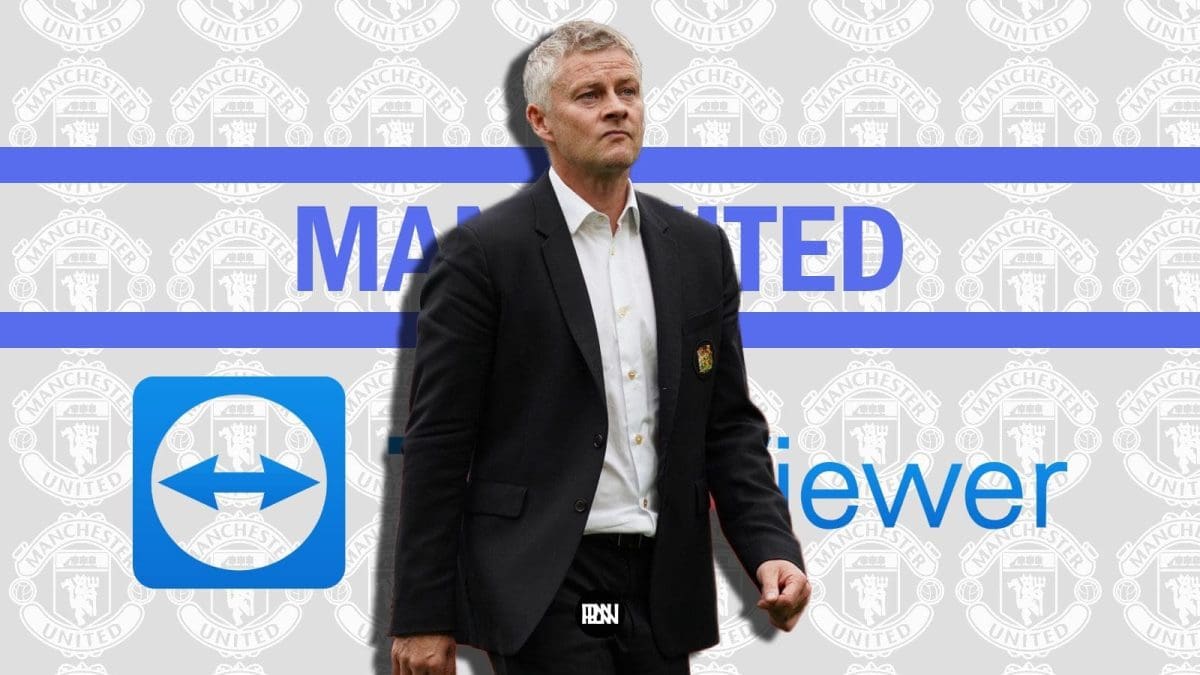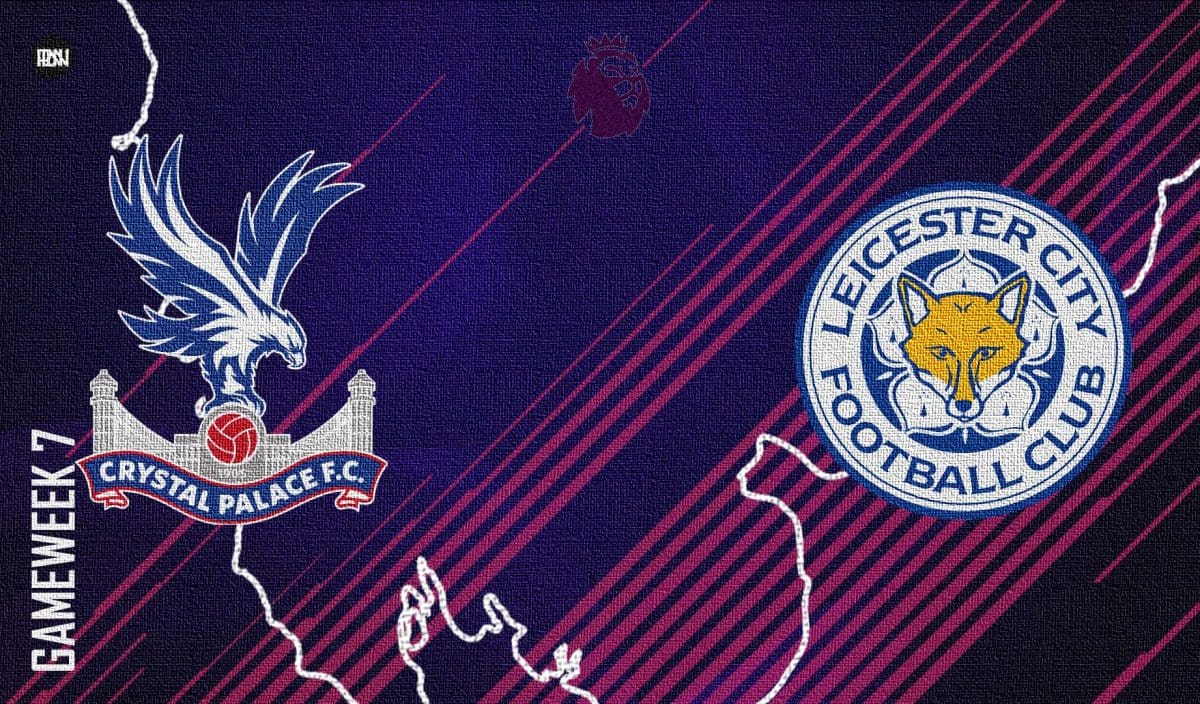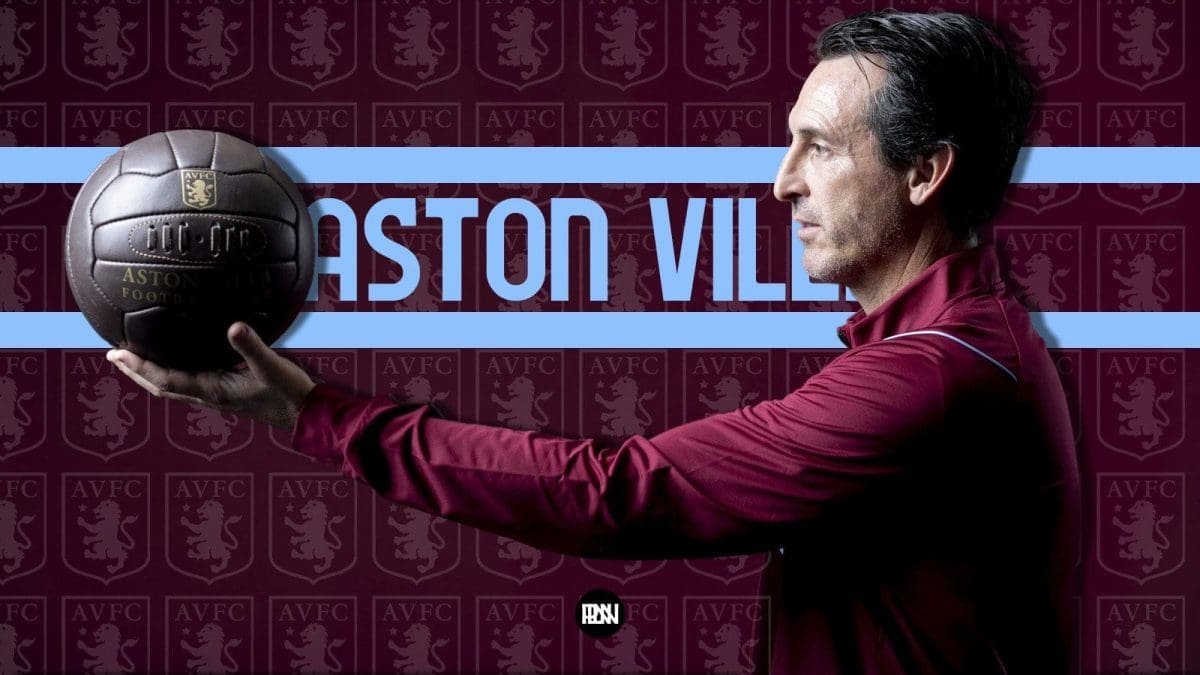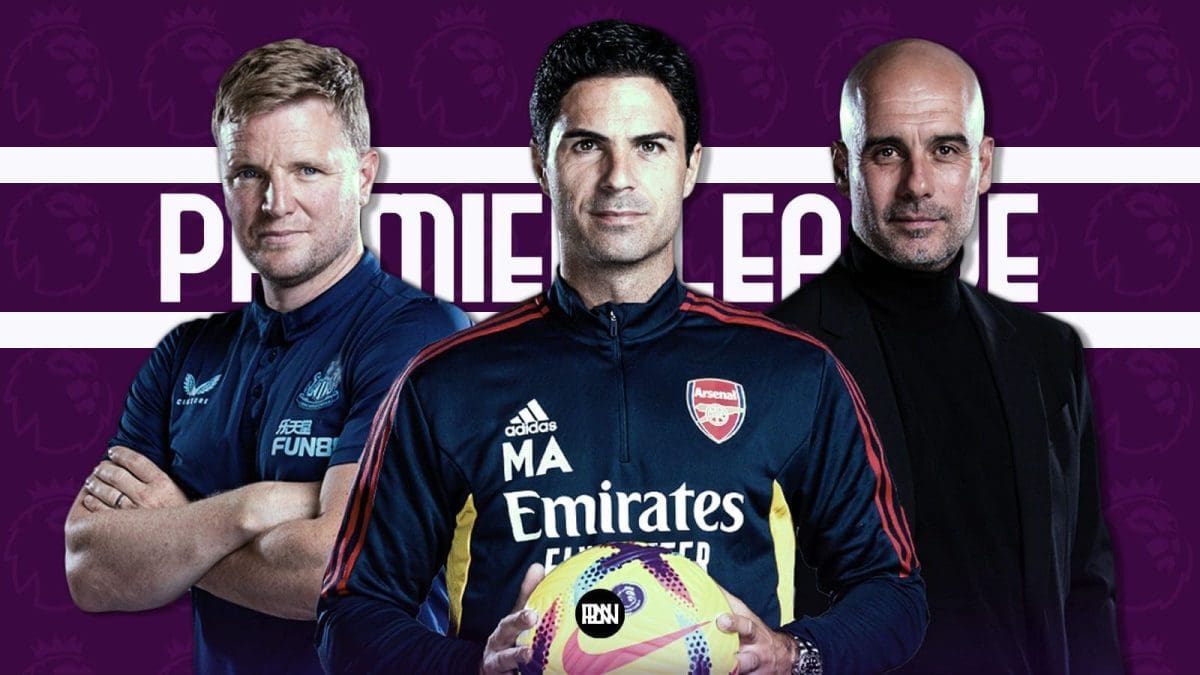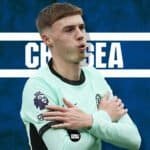Manchester United produced another dour attacking performance in the one nil loss to Aston Villa on Saturday. Failing to score for the first time in this league campaign and suffering a first league defeat of the season. To represent “dour” in statistical terms the attack produced 28 shots, only 4 of those shots were on target, all on an xG of 1.93 (understat) and an average of 0.07xG per shot. The scoreline might have been unusual (in the Premier League) but the performance was recognisable and was much like United’s performances for a majority of their games this season.
Some of the factors that produced the performance were specific to the game. Mason Greenwood happened to wear only his (poor) shooting boots, the team also lost two of their best players through a first-half injury to Luke Shaw and another to Harry Maguire later in the game. But some other factors have been visible throughout the season. The countless long shots, unproductive sequences of possession, a horribly exposed defence, and so on. This article looks to analyse those problems through a holistic view of the team’s performances this season.
Some of the major problems which highlight Manchester United’s struggles off late (and the ones we’d be looking deeply into in this article) are:
– The use of wide areas,
– Lack of variety in team movement,
– Ronaldo’s lack of synergy with the rest of the attack, and
– Counter-pressing
Variety in movement and attacking the wide areas
The lack of variety in movement and the poor use of the wide areas are tactically intertwined. The attack cannot keep the ball in the wide areas because both full-backs have been poor at creating chances at a high level, and at stretching defences horizontally and vertically. Many a time this season the ball has been switched to the left side of the attack and Luke Shaw is found in a poor position to exploit the space which allows the opposition team time to shift and reorganise their defensive block.

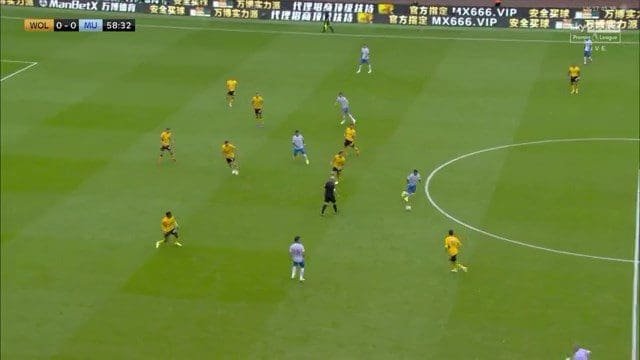
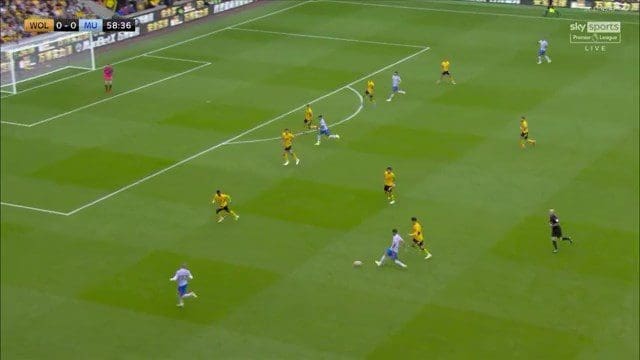
Aaron Wan-Bissaka on the other flank often takes poor touches that kill the flow of an attack and has been inconsistent at providing overlapping runs this season. These tendencies from both fullbacks make the team unable to effectively use the width when attacking.
The need for good use of the wide areas is that it stretches opposition defences, which creates more space in central areas for the forwards. Stretching defences from wide positions require ball striking or elite crossing ability; the ability to take on players and create chances through individualism or powerful ball carrying, which both full-backs; and an understanding of the timing of runs, rotations, and positioning in the final 3rd.
The full-backs excel at the latter, each to different extents, and that hasn’t been obvious for most of the games this season. Solskjaer’s job then becomes simple – to shield their limitations by creating in-game situations that maximise their strengths. Instead of making them perform so many actions from deep in the final 3rd like they have been required to do all season, the aim should be to create sequences that get them attacking higher positions in the final 3rd and closer to the opposition box. Case in point being that both Wan-Bissaka and Luke Shaw are much better offensively when they attack the by-line and are fairly comfortable at attacking the back post but haven’t constantly attacked those positions since the start of the season.
Both full-backs have consistently shown that they can attack the by-line and the box in a Man United jersey. Luke Shaw also showed some wonderful offensive qualities at the euros. So their ability to perform these roles are not in question. Solskjaer’s knowledge of their abilities is also (maybe) not in question, as we’ve seen them attack the by-line a lot during his tenure at the club.
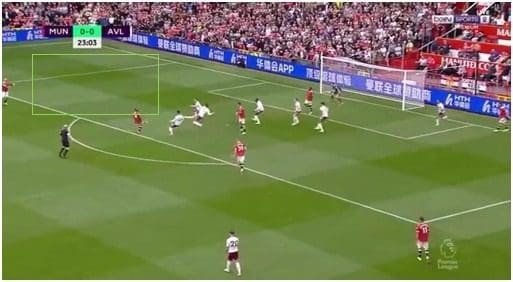
That the wide areas and both full-backs have been so poorly used in our attacks this season suggests at least one of two major issues. The first is that Solskjaer’s ideas are not consistent enough to create an attack with consistent and easily recognisable attacking patterns–a line of thought that has been echoed constantly by some sections of the fanbase. While the second is less of an indictment on his coaching ability and is more likely to be the case – he recognises that the current front line are not fully able to perform the defensive tasks of the game when they lose the ball and seeks to provide ample defensive cover using the full-backs and midfield.
I’ll look into why the latter is a flawed approach to providing a balance between offence – defence as you read on. But there’s also another point that bears mentioning.
Reducing or limiting the full backs’ involvement in the attack and depending solely on the front 4 for offensive inspiration requires super-effective patterns in the final 3rd. It requires a variety of offensive movements, intelligent positioning, intensity and sustained pressure. It requires a harmonious flow of passes, runs and quick thinking that get the ball into dangerous positions in the opposition box.
This hasn’t been the case as United have failed to create high-quality chances whenever they dominate possession. There’s a lack of penetration or retention from the central areas – which is where the forwards like to use the ball since the width is usually unproductive–and it culminates in constant turnovers, laboured attacking moves and some frustrating sequences of pointless long shots.

To maximise the potential of the profiles in the attack there should be outlets to release the ball and gain penetration into the opposition box either through the centre or, well, from the wide areas(!). Paul Pogba, Jadon Sancho and Mason Greenwood don’t offer a high level of penetration. They don’t consistently make runs in behind the opposition defence and are not good enough at dribbling or carrying the ball outside their man. Bruno Fernandes, despite offering a comfortable level of movement doesn’t offer much as an outlet against low blocks.
This leaves a huge responsibility on the shoulders of the centre forward, none other than Cristiano Ronaldo, to function as a primary outlet and offer penetration against packed defences. Well, let’s look at how he gets on in that regard…
Ronaldo and the quest for an outlet
Cristiano Ronaldo is one of the best penetrative players in the sport and has already proven that fact with praiseworthy four goals this season. And in the process, he has showcased his predatory instinct and movement in the box. But his tendencies outside the box leave a lot to be desired. In Ronaldo’s defence, he has played on the left for most of his career and has rarely been tasked with leading the line in attack. He’s not used to playing as the central focal point in attack.
But now he has been asked to do just that, and as things stand he has performed substantially below par. He’s unable to link up the attack due to his limited technical ability and agility. That doesn’t create much problems because of the number of playmakers in the front line, but his role in the attack then becomes to take up the right positions to facilitate their jobs and complement their movement.
It sounds simple, but he has quite literally done the opposite of this since his return to the club.
More often than not he calls for the ball to feet–to do mostly nothing with it–and clogs the same spaces with other forwards in the attack. He possesses limited technical ability which defeats the purpose of his dropping deep; he can’t carry the ball over large distances, can’t create and can’t beat players through dribbling. And in an attack already filled with very few runners off the ball, the other forwards won’t make runs off him because they don’t trust his ability to link up play or find their runs.
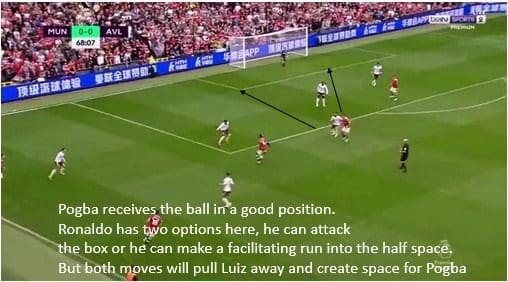
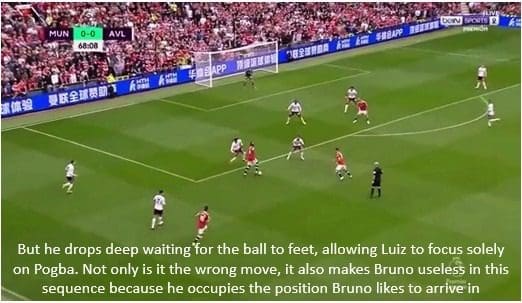
His positioning and tendencies outside the box make the attack predictable and toothless. The attack can’t stretch defence centrally because he’s most often unavailable as a primary outlet. He doesn’t offer the same type of complementary movement to the rest of the forwards which we saw from Edinson Cavani for much of last season.

A combination of Ronaldo’s poor movement and the lack of penetration from FBs is perfectly illustrated by the sequence below.



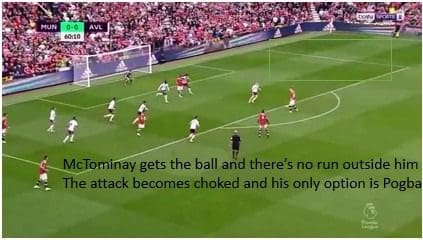

Another area where Ronaldo’s movement has caused problems albeit to a lesser extent is his movement in transition. Transitions are a huge part of United’s approach, and having forwards who can create danger in counter-attacking situations is crucial. Ronaldo lacks the pace to pose an elite threat on the break but he makes up for it with a hunger to attack the opposition’s unprotected defence and intelligent movement. But those instincts get muddled up with his tendency to drop deep and/or demand the ball to feet. He ruins the rhythm of the attack in the process and slows it down. Most times allowing the opposition to recover and plug spaces in their defence.
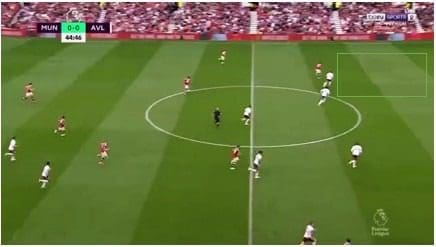

His 2nd goal after his return came from an offensive transition, a brilliant move where he matched the speed of Luke Shaw’s running with the ball and attacked the space behind Newcastle’s defence. He needs to attack space in the same way and avoid the random urges to present himself as a ball-carrying or creative option. His positioning mostly prevents the actual ball carriers and creative players in the transition from finding other dangerous passing options. This sequence below is an example of such situations:

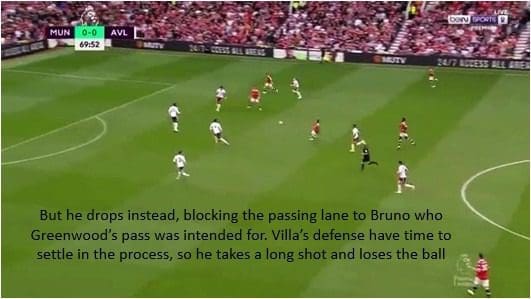

There’s a possibility that these moments happen because of the pressure on him following his move back to United. He might be trying to do too much to match the persona of the new “star figure” in the attack. But in this current United team, less from him will contribute to more down the line. And at the moment it’s up to Solskjaer to find clear solutions to the problems Ronaldo has created and is creating in the attack. Whether that be moving him to the left and playing a better focal point in the centre of the attack, giving him clear instructions about his positioning in the attack or changing the formation entirely. But changes need to be made and quickly too.
Counter-pressing
When analysing the inability of the full-backs to stretch defences and properly occupy the wide areas, it was inferred that the restricted approach from the full-backs was purposely done to protect the team from transitions. Ideally, this should mean that the team is well-protected from opposition counter-attacks. But in all of United’s games this season, the team has never quite looked assured in defensive transition.
A major reason for this has been the inability of the front line and midfield to recover the ball immediately after losing possession, or to prevent the opposition from progressing (via passing or carrying) the ball into dangerous areas. The inability to do this is because of a poor counter-pressing structure.
Counter-pressing means to press and recover the ball as a unit immediately after the loss of possession. It is also done with the aim of stopping the opposition from creating danger and is used as a means of defensive transition but has plenty of offensive benefits–recovering the ball in a position close to the opposition goal increases the team’s chances of creating a goal from that position, and sustaining pressure against a defence increases the odds of you scoring the next goal in the game.
United have never really excelled at counter-pressing. And Solskjaer often looks to Fred to perform most of the dirty work in this regard, using his intensity and pressing ability to close down and regain the ball whenever it is lost. United can sustain pressure or create danger in the few instances and stretches of the game when he makes the right decisions or times his challenges properly. But Solskjaer has failed to consistently coach and incentivise a concerted effort from the team to press immediately after losing possession.


The success of a counter-press is mostly determined by intensity, sprinting, positional rotations and knowledge of the right spaces to block to stop the opponent from moving the ball. United have been poor in these requirements to varying degrees this season. The attack has looked lackadaisical, leggy and slow at times; while the whole team lack the organisation to hunt the ball as a unit.
A poor counter-press is also indicative of having a lack of compactness around the ball which has been a constant with United’s attack recently. The midfield often fails to offer adequate support for the attack and are often too far away from the ball. The forwards also struggle with good spacing around the ball, some of the reasons of which have been discussed in the sections before this.
In possession, simultaneously having compactness and proper spacing around the ball ensures support for the player in possession and reduces the risk of turnovers. The reason is simple–there are enough bodies around the ball to create passing options but they are properly spaced (through runs and good movement) to make them easily accessible.
In the event of a loss of possession, having compactness around the ball allows the players to quickly apply pressure and regain possession.
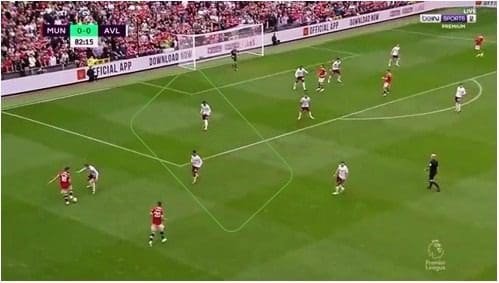

This shows how good offensive principles often facilitate good defensive principles. United have failed to consistently observe good offensive principles this season, and it is a major reason for their poor performances as well as defensive struggles.


